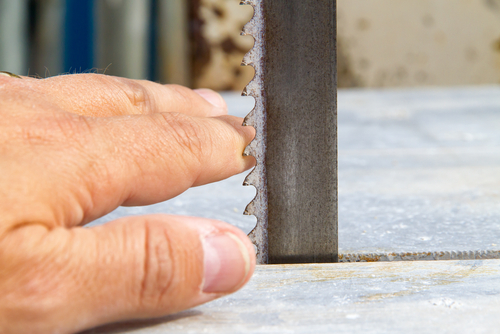In the fall of 2014, OSHA inspected a manufacturer of rice cakes and other healthy snack products after a worker suffered an electrical injury in August 2014. While OSHA was on-site, the Agency discovered that another worker had missed 20 days of work and spent another 22 days on restricted duty after part of his ring finger was amputated in June 2014. The worker had been adjusting a machine used to make rice cakes.

Yesterday, we discussed lessons in electrical safety work practices from OSHA’s inspection of the manufacturer; today, we’ll look at the ways in which the company allegedly failed to protect workers from amputation hazards.
Two Forms of Protection
There are two ways to protect workers from amputation hazards: machine guarding and lockout/tagout. Typically, machine guarding protects workers during a machine’s normal production operations, and lockout/tagout protects the worker during shutdowns and maintenance activities.
Your one-stop safety management resource, available 24/7. Go here to take a no-cost site tour or here to try it in your own office!
Machine Guarding
Machine guards protect workers by preventing contact with a machine’s points of operation, prime movers, ingoing nip points, and rotating or other potentially hazardous moving parts. OSHA alleges that the manufacturer’s workers were exposed to unguarded rice cake machines, creating laceration and amputation hazards.
Basic principles of machine guarding found in 29 CFR 1910.212 include:
- Guards must be designed and constructed to prevent the operator from having any part of his body in the danger zone during the machine’s operating cycle.
- Guards must be secured to the machine.
- Guards must not create any additional hazard (like sharp edges or hot surfaces).
Great news! BLR’s renowned Safety.BLR.com® website now has even more time-saving features. Take our no-cost site tour! Or better yet, try it at no cost or obligation for a full 2 weeks.
Lockout/Tagout
OSHA determined that the employee who suffered the amputation injury while servicing the rice cake machine was exposed to the operating parts of the machinery because it had not been properly powered down before maintenance. This is a lockout/tagout violation, as opposed to a guarding violation, and is cited under 29 CFR 1910.147. The lockout/tagout standard requires employers to:
- Create an energy control program that includes energy-isolating procedures for each piece of equipment that could expose workers to an unexpected release of hazardous energy.
- Provide the necessary equipment for securing hazardous energy sources.
- Train workers in lockout/tagout procedures.
For more detail on creating a two-pronged program for preventing amputations in your workplace, visit Safety.BLR.com®.

Fact and figure, it is very essential to completely make sure that workers goes back home as they have come in their complete body. Issues of laceration amputation can only be reduce if not totally stop by constant and concrete supervising and monitoring of these two method of controlling this hazardous, (putting guide & lotto)in place and frequently educating personnel on the important reason while the information must be taken seriously. And both theoretical and practical lesson be revealed.